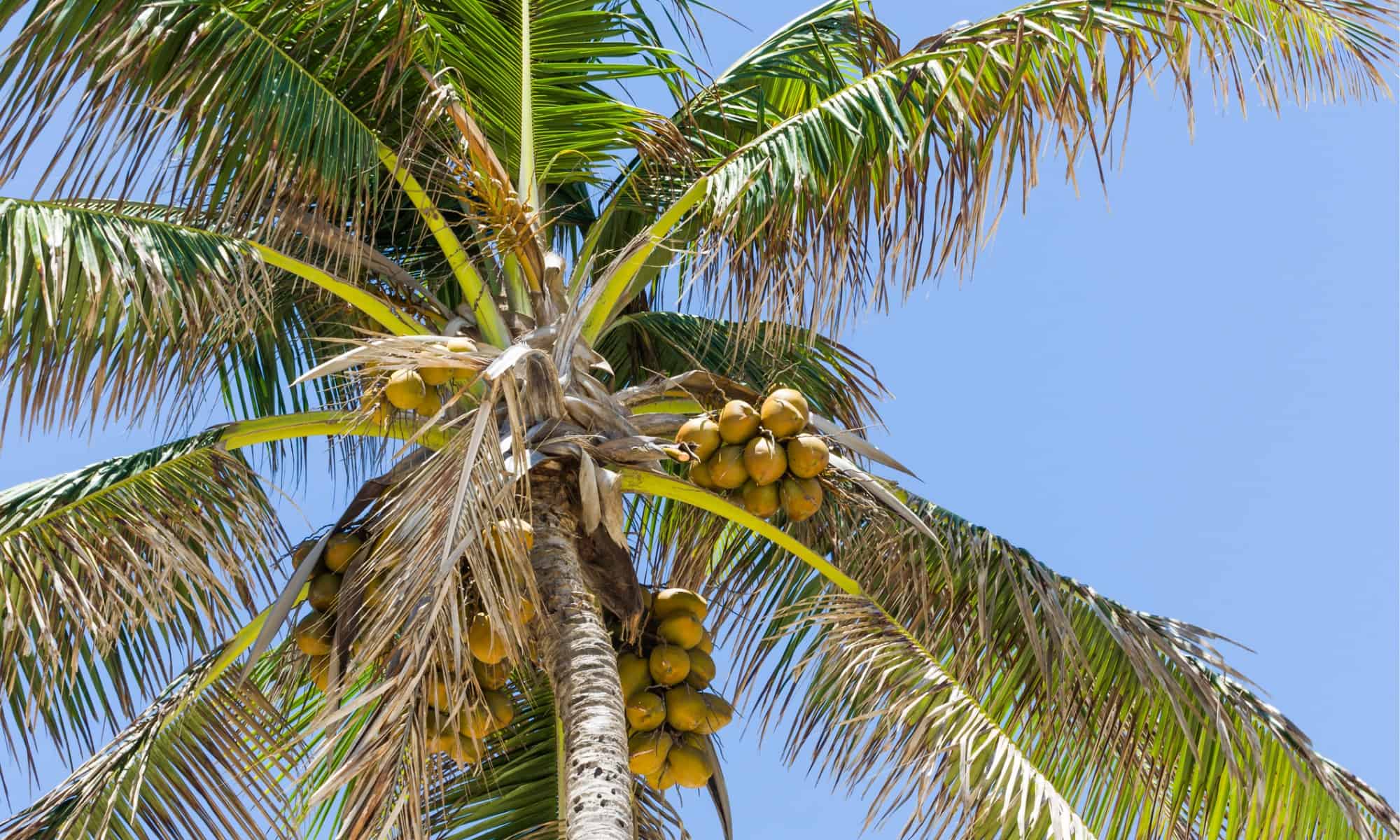If you’ve noticed the physical similarities between a coconut tree vs palm tree, you may be wondering if they are related to one another. What might be the differences between coconut trees and palm trees, and do they have more in common than you originally thought? Is it true that all coconut trees are technically palm trees?
In this article, we will answer all of the questions you might have regarding coconut trees and palm trees, including whether or not they are related to one another. We will also address what they look like physically, what these two trees are typically used for, and where they originated. Let’s get started and talk all about coconut trees and palm trees now!
Comparing Coconut Tree vs Palm Tree

| Coconut Tree | Palm Tree | |
|---|---|---|
| Plant Classification | Cocos nucifera | Arecaceae family |
| Description | Grows up to 100 feet tall with leaves up to 20 feet in length. Leaves are wide and grow diagonally from each other. The trunks are smooth and light in color, and large clusters of coconuts grow at the top of the tree | Averages anywhere from 30 feet-200 feet tall, depending on the variety. Leaves also vary in length, but they grow as narrow fans more often than not. Trunks are rough to the touch, frequently dark tan in appearance. Some palms sprout faux trunks in clusters, while others have a more traditional tree appearance |
| Uses | An abundance of uses including culinary ones (coconut oil, milk, water, etc). The entire tree is used to make tools, charcoal, fibers, and countless other uses | Many uses and among one of the top utilized plants in the world based on the number of varieties. Fibers, wood, and fruit are used, and palm oil is a popular product in a culinary capacity |
| Origin and Growing Preferences | Originated in the Indo-Pacific region of the planet; prefers sandy soil, full sun, plenty of humidity and rainfall, and warm temperatures, as cold will kill it | Originated in South America and the Caribbean; prefers subtropical climates and plenty of humidity. Some varieties can handle more cold than others |
| Presence of Fruit | Yes; large, hairy coconuts | Sometimes; often small. Dates are common |
Key Differences Between Coconut Tree vs Palm Tree
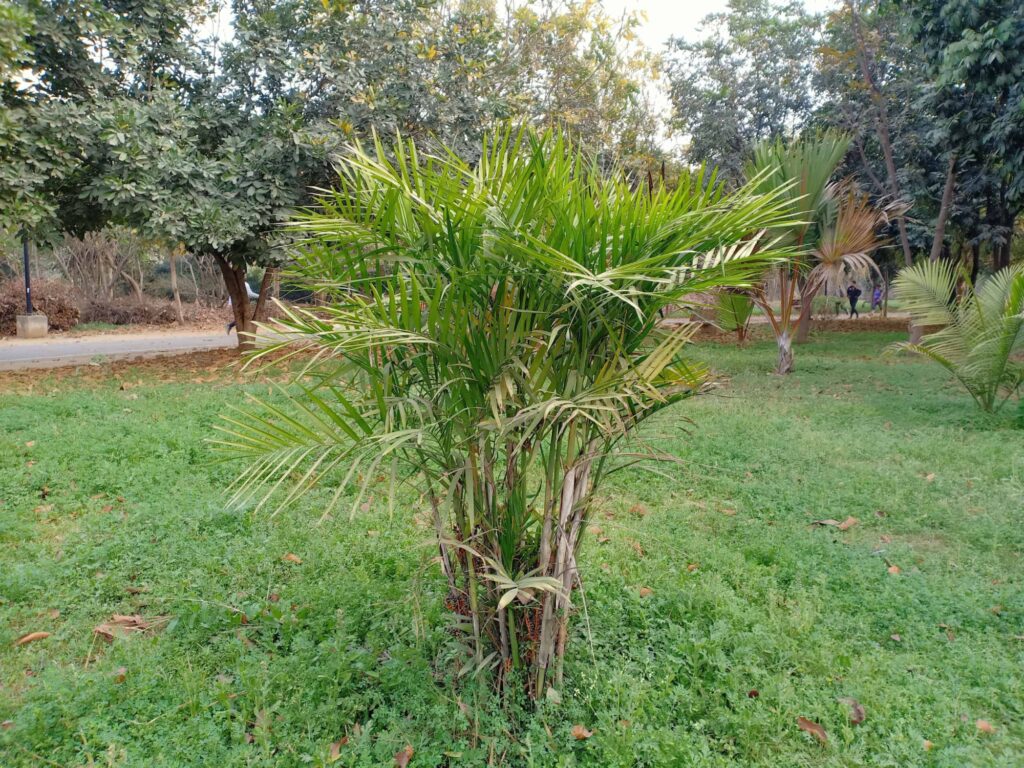
Palm trees have a wider range of growth compared to coconut trees.
©Vipul1989/Shutterstock.com
There are a number of key differences between coconut trees and palm trees. For example, all coconut trees are technically palm trees but not all palm trees are coconut trees. In addition, palm trees have a wider range of growth compared to coconut trees. The leaves found on coconut trees are wider compared to the fanned-leaf appearance of palm trees. Finally, coconut trees always produce fruit, while not all palm trees do.
Let’s address all of these differences in more detail.
Coconut Tree vs Palm Tree: Classification
It is important to note just how similar coconut trees and palm trees are, given that they belong to the same plant family. This means that all coconut trees are technically palm trees, but not all palm trees are coconut trees, given the fact that coconut trees are a specific variety of palm. Coconut trees can be classified specifically as Cocos nucifera, while palm tree might refer to any type of palm in the Arecaceae family.
Coconut Tree vs Palm Tree: Description
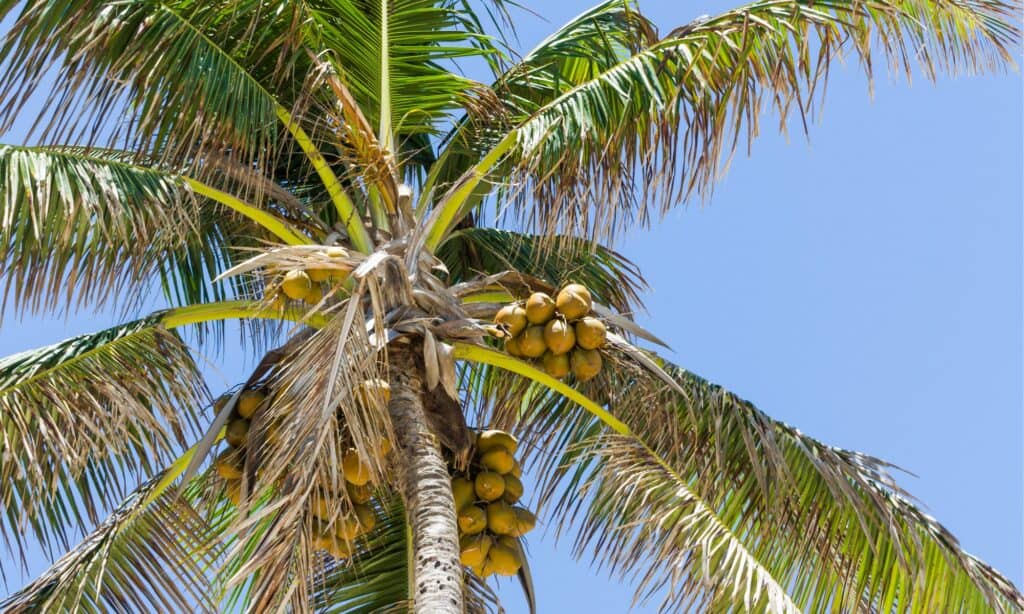
The leaves found on coconut trees are wider compared to the fanned-leaf appearance of palm trees.
©iStock.com/Thiago Santos
It can be extremely difficult to tell the difference between a coconut tree and a palm tree upon first glance, especially if there is no fruit present. However, depending on the species of palm tree, they grow to a variety of different heights compared to the average coconut tree. In addition to this, most coconut tree trunks are smoother and lighter compared to the average palm tree trunk. In fact, some palm tree varieties grow as clustered stalks rather than one centralized trunk.
You can also potentially tell the difference between these two plants based on their leaves. For example, palm trees grow their leaves in a fan-shape, while coconut trees grow their leaves as skinny diagonal blades, growing opposite each other. For the most part, coconut tree leaves are wider compared to the average palm tree leaf. Finally, coconut trees grow coconuts, while not all palm trees grow fruit.
Coconut Tree vs Palm Tree: Uses
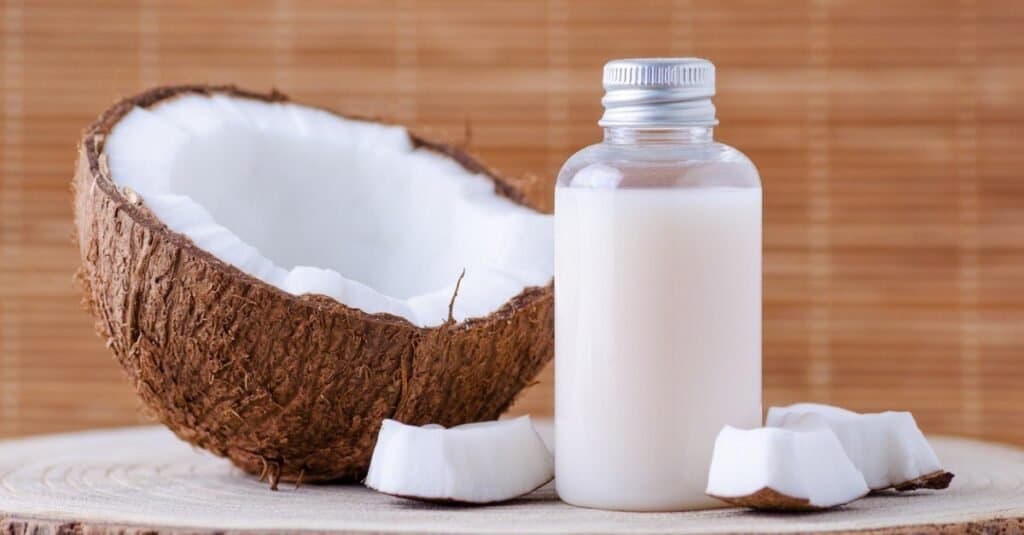
Unsurprisingly, coconut trees always produce fruit, while not all palm trees do.
©nadisja/Shutterstock.com
Coconut trees and palm trees are used for a variety of things, and palm trees are among the most utilized plants in the world. However, the main difference between the uses of these two trees is the fact that coconut trees produce coconut products, such as oil, water, and milk and palm trees produce dates or palm fruits. You can get palm oil from palm trees, but you cannot get this from coconut trees.
Coconut Tree vs Palm Tree: Origin and How to Grow
The exact origins of palm trees and coconut trees are difficult to determine. However, many people claim that coconut trees originated in the Indo-Pacific region of the world, while palm trees originated in South America and the Caribbean. Both of these trees need warm, subtropical climates in order to thrive, but some palm tree varieties are more cold tolerant compared to coconut trees.
Coconut Tree vs Palm Tree: Presence of Fruit
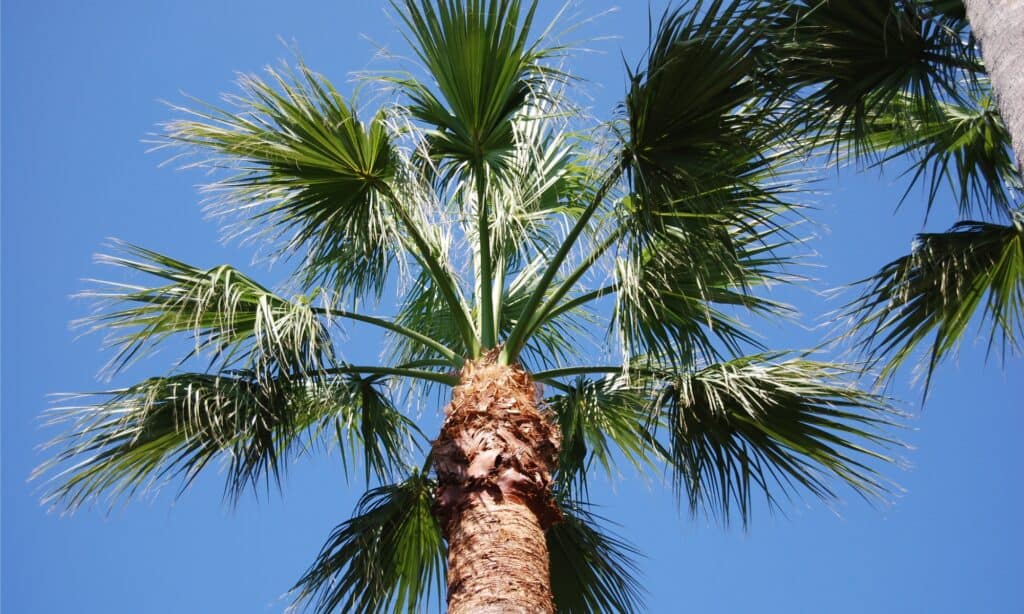
Some palm tree varieties are more cold tolerant compared to coconut trees.
©iStock.com/tadamee
One of the most obvious differences between coconut trees and palm trees is the presence of fruit. All coconut trees grow coconuts, but not all palm trees produce fruit. However, there are some palm varieties that produce dates or other types of fruits, as well as nuts, while coconut trees only produce coconuts. No matter what you prefer, both of these trees make a fantastic addition to your backyard landscaping, so long as you have warm enough temperatures to grow them in!
Bonus: Fun Facts About Coconuts
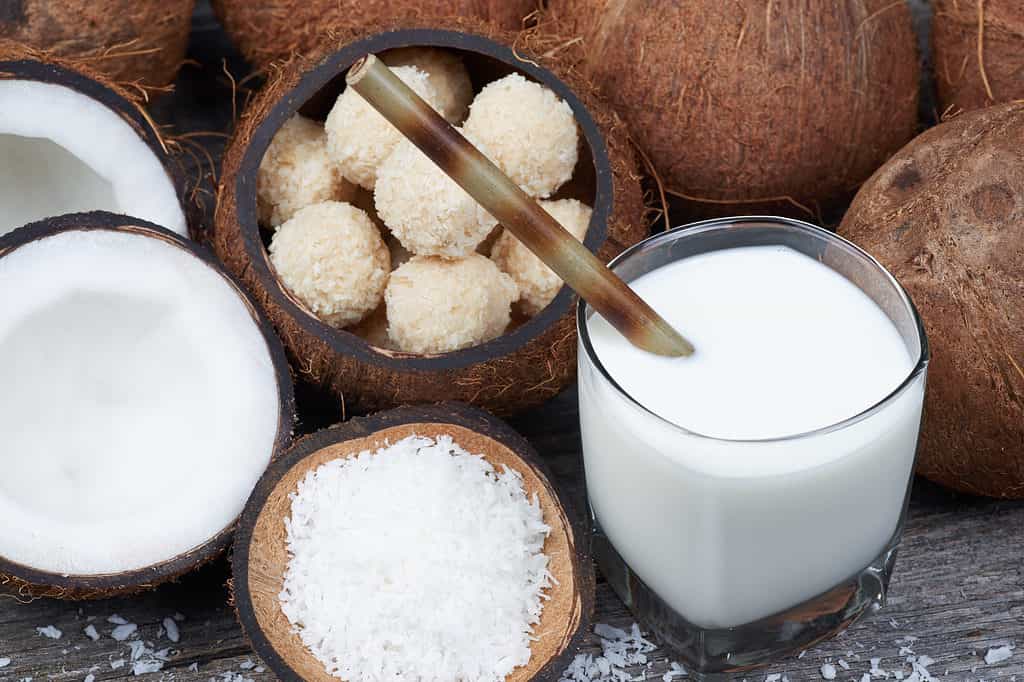
Coconut whole, coconut milk, and shredded coconut are all delicious and nutritious.
©Krzycho/Shutterstock.com
In the article we only touched on the many ways that coconut trees and fruit are used. Let’s consider the coconut – that most delicious and unusual nutty fruit!
- Coconut trees live around 60 years and produces an average of 15 coconuts each month.
- Coconut milk is made from the expressed juice of grated coconut meat and water.
- During the early stages of its development, a coconut contains high levels of water that can be consumed as is for a refreshing drink.
- In the United States, coconut trees will grow only in extreme southern Florida and California.
- When purchasing a coconut, shake it to make sure there is water inside. If you do not hear anything – the coconut is too ripe and will have an altered taste.
- Never buy a coconut that has a crack or puncture. There should be no leakage from the coconut’s three dark eyes.
- Whole coconuts can be stored in the refrigerator for up to two months. Once opened – the meat will only keep for a few days.
Thank you for reading! Have some feedback for us? Contact the AZ Animals editorial team.

